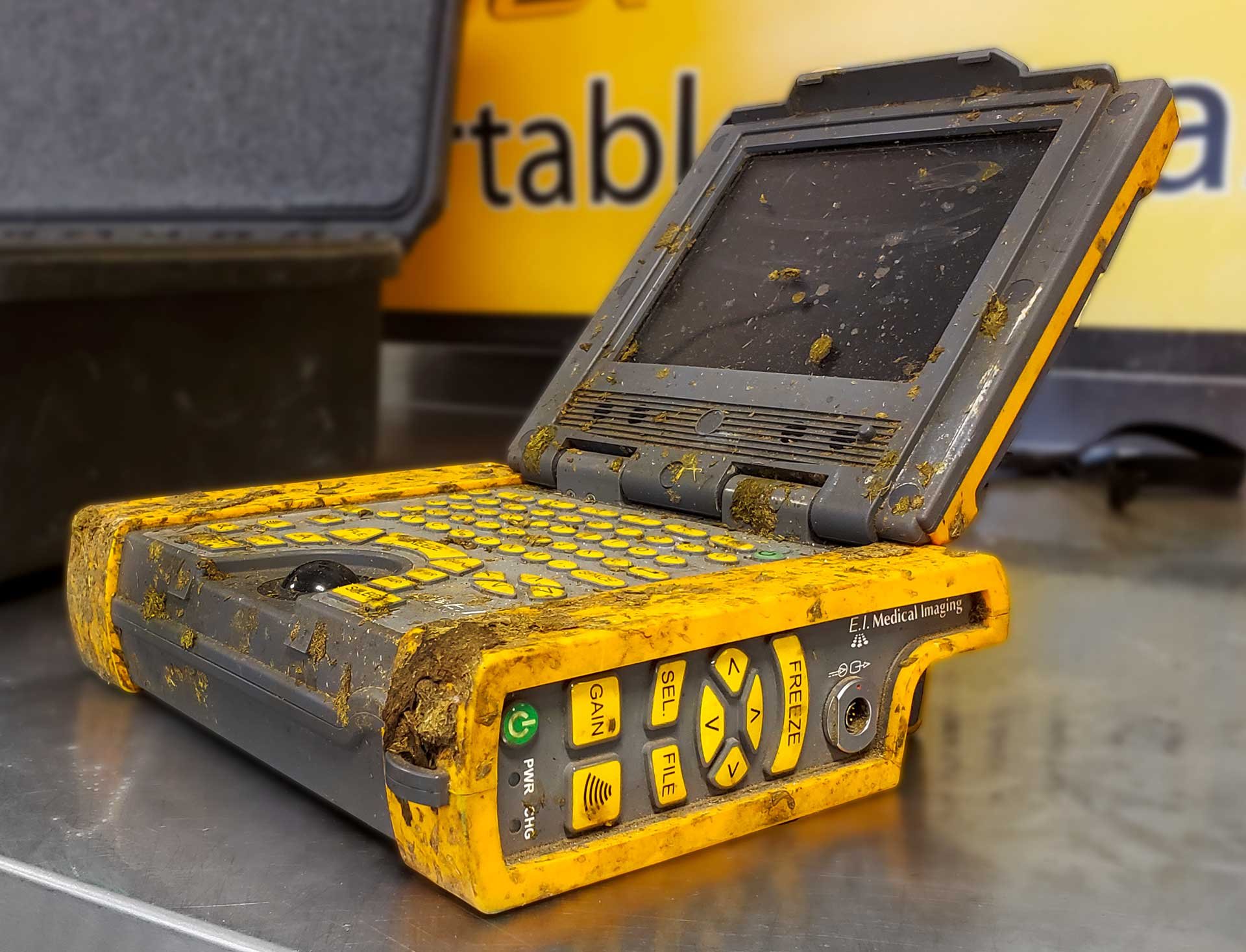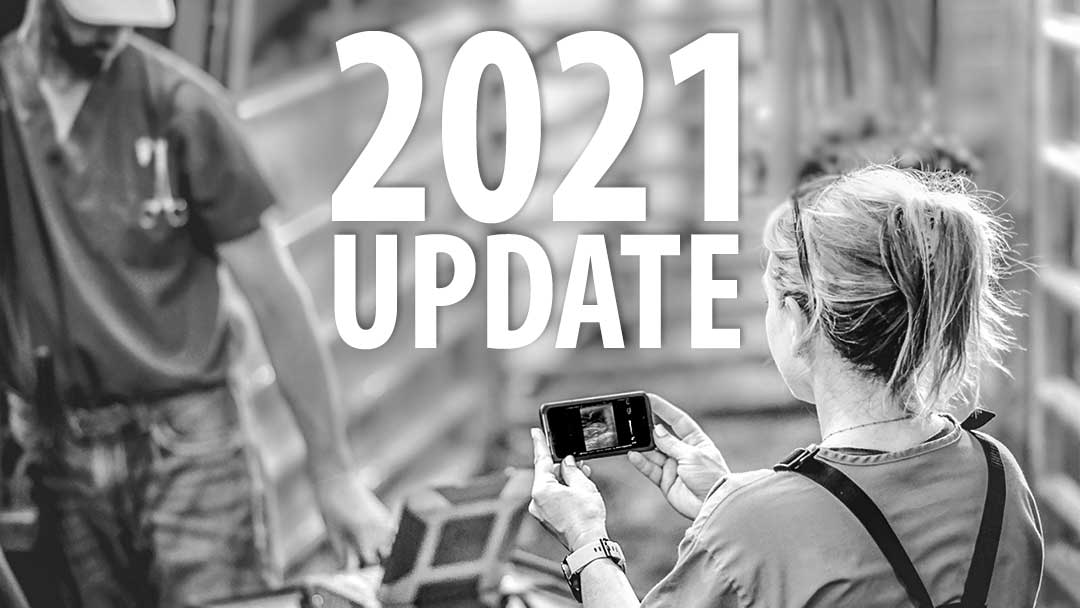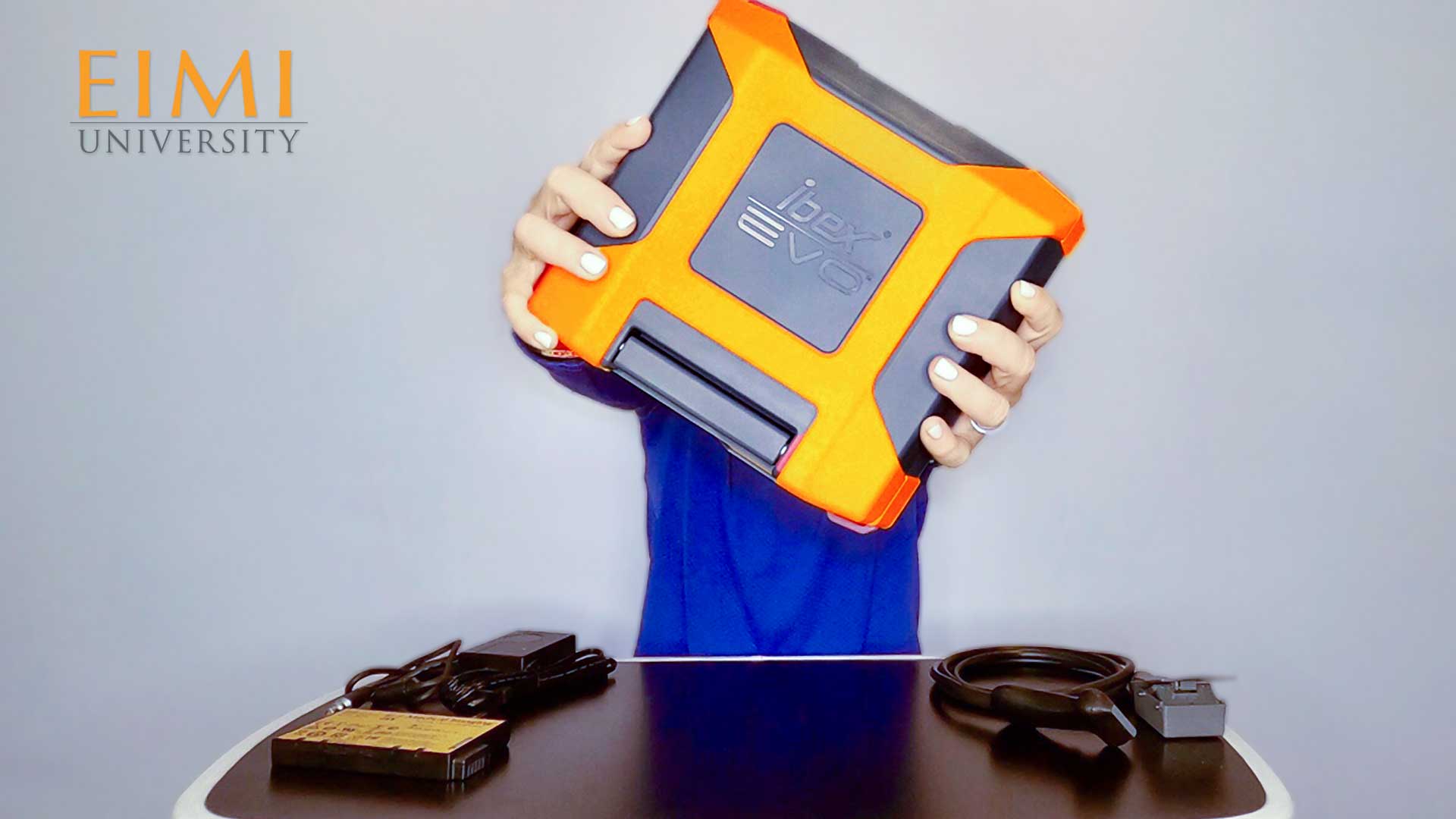 E.I. Medical is renowned for manufacturing the toughest ultrasounds for field use. You may know about our third-party testing on drops, water resistance, temperature extremes, and more. You may even know that our connectors and hinges are sealed to keep moisture out!
E.I. Medical is renowned for manufacturing the toughest ultrasounds for field use. You may know about our third-party testing on drops, water resistance, temperature extremes, and more. You may even know that our connectors and hinges are sealed to keep moisture out!
But while a lot of engineering has gone into these features, your equipment will serve you best if you do your part, too. Our service department sees a lot of interesting things come across their desks, and many of the electronic issues seen can be easily avoided with a little preventative care. This includes daily inspection of the equipment, and most importantly, a little routine cleaning and maintenance.
 I chatted with Adam Warren, a transducer specialist at EIMI, to get the lowdown on what common mistakes he sees being made that can lead to repairs being necessitated. Here is some extremely valuable information, straight from the horse’s mouth!
I chatted with Adam Warren, a transducer specialist at EIMI, to get the lowdown on what common mistakes he sees being made that can lead to repairs being necessitated. Here is some extremely valuable information, straight from the horse’s mouth!
Transducer, headset, and power connectors
The problem...the various ports into your ultrasound are sealed. This means that water cannot enter into the system through these areas. However, it does not mean that the connection itself is immune to water damage. Moisture, especially in the presence of organic matter, will damage the metal pins and over time they can cease to function correctly. Furthermore, when electrical current runs through these damp or dirty connections, the metal pins are oxidized at an accelerated rate and can result in breakage or failure.
The solution...probe and power connectors should be cleaned at least daily when used in dirty or damp environments, and between farms or barns if the work is extra dirty. Ideally this would involve using a soft brush to remove large amounts or organic material, blowing out the moisture and debris with compressed air (CO2 canisters or cans of compressed air used for cleaning keyboards and electronics work well), and wiping down the ports with isopropyl alcohol.
Between uses and at the end of the day, store the ultrasound with the probe and headset disconnected to allow the connectors to dry
Hinges
The problem...hinges on the Ibex Pro and EVO monitors can wear out over time, like anything with moving parts. However, water and gritty debris in this area can also accelerate this process
The solution...the same cleaning kit and theory used with the connectors can be employed here. Brush off large accumulations of organic material using canister air to blow out the smaller recesses and inaccessible areas, and then clean with isopropyl alcohol. We also find that Windex works well for cleaning the plastic casing on the Ibex ultrasounds.
Treat your hinges with care—be careful not to push them open beyond their limit, or to carry the ultrasound by the monitor lid.
Transducers
The problem...probe damage generally comes down to three main issues—moisture intrusion, crystal damage, and cable damage. While many times this is due to accidental trauma, routine wear can be mitigated with a little preventative care
The Solutions...
Moisture intrusion—pay attention to the condition of your equipment with daily inspections. Most areas have several layers of protection built in, but if you’re beginning to see separation of the cable jacket or the plastic casing around the lens on the head of the probe wearing away, contact us! We’d be happy to look at photos and determine if we need to replace these outermost layers before damage to the internal parts can occur.
Crystal damage—the crystal is a critical component of your transducer, responsible for transmitting and receiving the signal that produces a visual image. Look after the lens that covers the crystal. Clean it carefully with a soft cloth or soft-bristled toothbrush, and inspect it for any defects or damage. Be especially aware of needle damage if you’re using a probe for aspirates! Little pinpricks in the rubber surface can lead to significant problems. For small animal applications, if you’re using a lot of alcohol in your scanning practices, just be sure to rinse and dry the probe head when you’ve finished, as alcohol can have a drying effect on the rubber over time.
Cable damage—our Kevlar-reinforced cables are flex-tested to well over a million flexions without any damage to the internal wires. That’s 20x more flexions than our closest competitor! Still, our equipment works hard in the field and we tend to use a lot of repetitive motions. Be cognizant of how you manage your cable. Store the probe coiled loosely in its case, being careful to avoid kinks. If you wear your ultrasound on your waist in the field, choose a short-cabled probe version whenever possible to avoid excess cable hanging downward from the connector. Think about which side you wear the ultrasound on and what route the cable takes from the unit to your hand and try to minimize any kinking or areas of repetitive stress. Inspect it for wear and let us know if you have any concerns so that we can try to stay ahead of any brewing problems!
As always, we welcome your feedback and questions. We are proud of the fact that as an equipment manufacturer and not just a product distributor, we are in a position to address and adapt to our customers’ needs! Please reach out to us if we can be of assistance to you—go to www.eimedical.com/get-info or call us at 1.866.365.6596.

Dr. Wierman is Staff Veterinarian
and Director of Education for
E.I. Medical Imaging
Follow Dr. Wierman on
Instagram @Dr.Wierman













